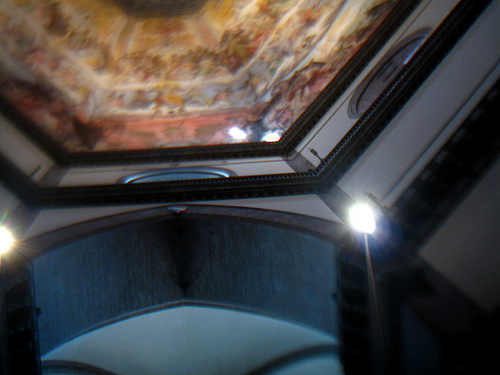Dead-Finger Tech: Canon Powershot SD550

 There is one thing I can never leave the house without: a pocket-sized digital camera. I always have this fear that if I don't bring my camera, I'll miss something big. Of course, I don't actually use my camera every time I go out, but I like the feeling of knowing its in my bag. I've had my current point-and-shoot, the Canon Powershot SD550, since the summer of 2006, and its served me incredibly well.
There is one thing I can never leave the house without: a pocket-sized digital camera. I always have this fear that if I don't bring my camera, I'll miss something big. Of course, I don't actually use my camera every time I go out, but I like the feeling of knowing its in my bag. I've had my current point-and-shoot, the Canon Powershot SD550, since the summer of 2006, and its served me incredibly well.
Coming off a disappointing and only satisfactory Sony Cyber-shot DSC-T1 that I managed to hold on to since 2004, I was looking for something petite, but with excellent quality under $400. (At the time it was about $350 on Amazon.com.) I found the Sony model to be overpriced, based on the fact that the photos usually came out blurry (even during the middle of a bright day) and the technology was better when it came to megapixel count in 2006 versus 2004. The only benefit to the Sony model was its slim, sleek design. Anyway, the Powershot had a higher megapixel count (7.1), a big LCD screen (not as big as the Sony, but size isn't everything...) and good reviews overall. It came with only a 32MB card, so I sprung for the 2GB card when the price dropped later. The biggest problem I've had is the lag time when it comes to flash, but I hate flash pictures anyway so this hasn't been as big of an obstacle for me as it might be for others.
I've only had to have the camera repaired by the Canon repair service once. However, the blame cannot be put on Canon whatsoever, but rather the fact that I'm probably the clumsiest person on the planet. While at the Duomo in Florence in June 2007, I wanted to take a steady photo of the interior of the dome. However, being rather dark in there, I couldn't get a sharp picture in my hands. Thus, I put the camera on its back, facing upward towards the dome, using the auto-timer to get the picture. This was all well in theory, and my friend got the same photo with his Sony camera (different model). Honestly what happened next, and not even to be funny, it was all a blur to me. When I went to pick up my camera, it slipped through my fingers and the lens bounced against the solid rock floor. Below is the photo the camera took while falling:
I had to fork over about $130 for repair and shipping, since the break was obviously my fault, but the turn-around time from mailing, repair and receiving it back was actually pretty quick. I actually had the same problem when I dropped it again (I told you I am very clumsy...) this past Halloween, but I decided to try reshifting the lens around by myself and I managed to get it back into place. (I don't recommend nor do I endorse you actually try that at home. I'm not even sure why I attempted it...)
Obviously, this model isn't the current model available in-stores these days. It's children include the Canon Powershots SD780 IS and SD1200 IS, if you're looking for a newer, similar model. Eventually I'll probably upgrade to one of these, but I'm waiting for the day I (inevitably) drop my camera again and it's beyond repair.
Do you always need to have a camera with you? What point-and-shoot model do you have? Has it worked well or not?
